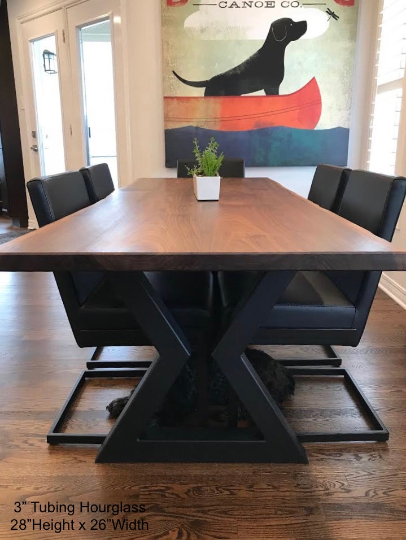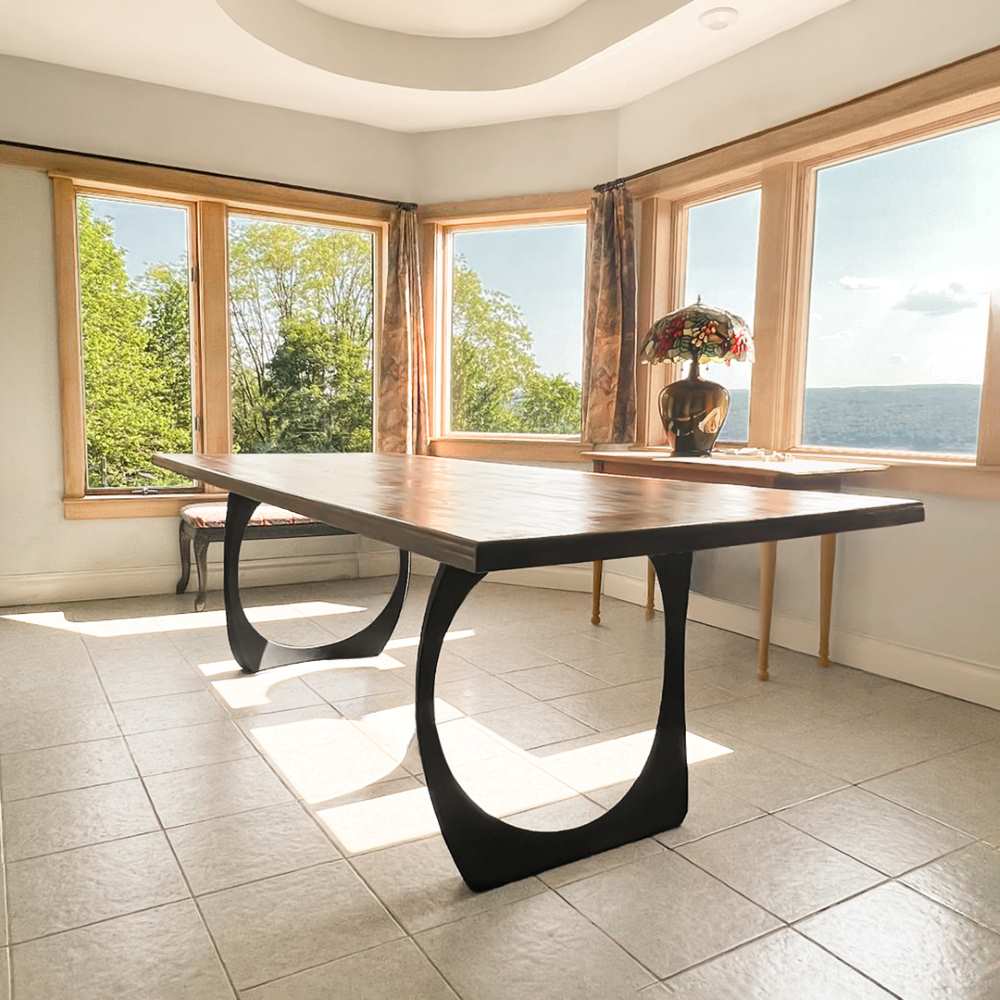From Typical to Modern: Find the Ideal Dining Area Table Legs for Your Design
The choice of eating room table legs plays a pivotal role in specifying the general character of your area, bridging the gap between conventional craftsmanship and modern-day aesthetics. While traditional designs such as cabriole and transformed legs stimulate a sense of timeless refinement, contemporary styles like barrette and geometric options provide a possibility for striking aesthetic interest. Assessing the right balance in between these styles calls for a nuanced understanding of your existing decor and personal taste. As you take into consideration these elements, the concern remains: just how can you perfectly incorporate these varied leg styles to produce an unified eating experience?
Recognizing Table Leg Styles
The range of dining-room table leg designs can significantly affect both the aesthetics and capability of the room. Each leg style adds unique visual components and practical attributes, accommodating diverse layout preferences and usage requirements. Understanding these styles is important for choosing the ideal table that lines up with your general indoor style vision.
For example, tapered legs offer a clean, timeless look that can enhance a space's beauty, while pedestal bases supply stability and make best use of legroom, making them perfect for smaller rooms. Hairpin legs, a hallmark of mid-century contemporary layout, introduce an industrial style, enabling for a ventilated, open feel. In a similar way, trestle legs stimulate rustic appeal, supplying robust assistance and a feeling of timelessness.
In addition, the selection of products plays a significant duty. Wooden legs can bring warmth and texture, whereas steel choices often convey a streamlined, modern vibe. Eventually, recognizing table leg designs is essential for producing a natural eating area that mirrors individual style while making sure usefulness and convenience. By thoughtfully thinking about these elements, you can enhance both the practical and visual appeal of your dining area.
Traditional Table Leg Options
When selecting dining-room table legs, conventional alternatives typically symbolize classic sophistication and craftsmanship. These layouts reflect a rich heritage and a dedication to top quality, making them excellent for those who appreciate traditional aesthetic appeals.
Among the most iconic conventional leg styles is the cabriole leg, identified by its graceful bent shape. This layout often includes decorative carvings and is most typically discovered in Queen Anne and Chippendale furnishings. Another preferred alternative is the transformed leg, which boasts a collection of smooth, rounded shapes that supply a traditional appearance while preserving security.
Moreover, the straight leg, while straightforward, offers a unadorned and tough framework that can blend flawlessly with a range of tabletop styles. For those drawn to ornate describing, claw-and-ball feet legs evoke a sense of grandeur and can act as a stunning centerpiece in any type of eating room.
Last but not least, pedestal bases, although not purely legs, offer a different standard choice that enables ample legroom and can be wonderfully carved. Each of these standard leg styles adds to the overall atmosphere of a dining-room, weding feature with aesthetic charm.

Modern Table Leg Styles
Modern table leg styles offer a diverse variety of styles that stress ingenious products and clean lines. These layouts often focus on performance while functioning as striking prime focus within an eating area. Minimalist appearances prevail, with legs crafted from materials such as metal, glass, and crafted wood, which contribute to a modern and airy feeling.
One prominent design is the barrette leg, defined by its slim, tapered framework that supplies stability without frustrating the tabletop (dining room table legs). This design is often located in mid-century modern-day furniture and can effortlessly match numerous table forms. An additional pattern is making use of geometric forms, where legs might handle unbalanced or angular forms, including aesthetic interest and a touch of artistry

Mixing Designs for Unique Rooms
Often, homeowners seek to produce special eating areas that reflect their personal style by mixing various design components. This technique enables for the unification of varied aesthetic appeals, resulting in a harmonious yet distinct environment. Combining a rustic wood table with streamlined, modern steel legs can create an eye-catching contrast that raises the area's general charm.
Additionally, incorporating vintage table legs with contemporary tabletops can stimulate a feeling of history while keeping a modern sensibility. Such mixes not just display specific taste however additionally urge imagination, permitting home owners to curate a space that feels both individual and inviting.
Color plays a critical function in this mixing procedure; picking table legs that complement or contrast with the existing shade scheme can enhance visual rate of interest. Whitewashed legs can soften the boldness of a dark table surface area, producing a well balanced aesthetic.
Tips for Choosing the Right Legs
Choosing the right table legs is important for achieving both functionality and aesthetic charm in your dining space. Begin by considering the overall style of your room. Typical settings take advantage of legs that include detailed carvings or turned layouts, while contemporary areas may call for smooth, minimal designs.
Next, evaluate the elevation and stability of the legs. dining room table legs. Conventional eating tables vary in between 28 to 30 visit here inches in elevation, so ensure the legs match this dimension for convenience. In addition, durable products, such as wood or metal, can enhance security and durability
Evaluate the leg form as well-- alternatives include straight, tapered, or stand layouts. Straight legs use a classic appearance, while conical legs can add a touch of sophistication. Pedestal bases offer sufficient legroom and are excellent for smaller spaces.
Final Thought
In recap, picking the optimal eating room table legs needs cautious consideration of both standard and contemporary designs. Conventional alternatives such as cabriole and transformed legs use ageless elegance, while modern-day designs like barrette and geometric forms provide a modern touch. By harmonizing leg style, elevation, and product with the overall decor, a natural and welcoming atmosphere can be attained. Inevitably, the selected table legs should mirror the wanted visual, boosting the dining experience within the area.
The image source selection of dining area table leg designs can dramatically influence both the aesthetic appeals and functionality of the room. Eventually, recognizing table leg styles is necessary for creating a natural dining location that mirrors individual style while making sure usefulness and comfort.One of the most iconic typical leg styles is the cabriole leg, defined by its stylish bent form. Straight legs supply a traditional look, while conical legs can include a touch of elegance.In summary, selecting the ideal dining area table legs calls for mindful consideration of both typical and contemporary styles.